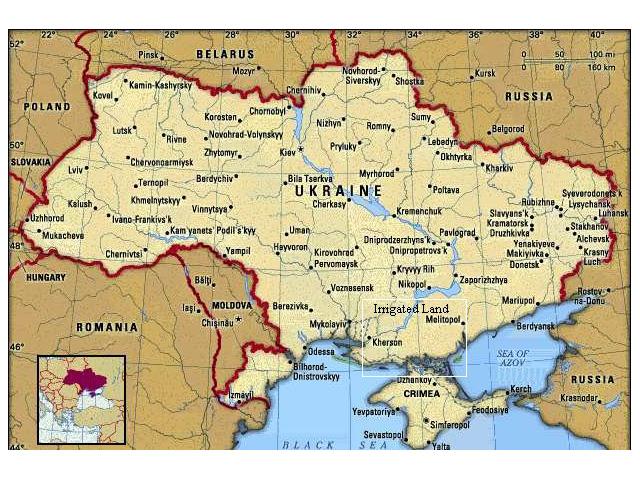Corteva: Expect 70% Planting in Ukraine
Corteva CFO Says Ukrainian Farmers Could Plant Majority of Spring Crop
LINCOLN, Neb. (DTN) -- Despite the ongoing military conflict in Ukraine, the country's farmers are expected to complete a majority of spring planting, the head of a major U.S. seed company said during an earnings call Thursday.
Dave Anderson, Corteva Agriscience executive vice president and chief financial officer, said the company is performing well in Europe, the Middle East and Africa, despite the war in Ukraine, which has created logistical constraints.
"Speaking of Ukraine, demand was strong in military-free areas for both crop protection and seeds," Anderson said.
"Farmers continue to plant crops, and for local estimates, many expect more than 70% of Ukraine spring crops will be planted."
Anderson said during the Corteva earnings call the company expects to lose between $25 million and $75 million for exiting its Russia business. Russia represents about 2% of Corteva's annual revenue.
DTN Lead Analyst Todd Hultman said even if the planting estimate is accurate, Ukrainian farmers have other challenges.
"My initial impression of Corteva's assertion that Ukrainian farmers will get 70% of spring crops planted is that it sounds optimistic, and it is important that we don't interpret it to mean Ukraine will be able to export 70% of its normal grain totals," he said. "That could be a much more difficult task."
P[L1] D[0x0] M[300x250] OOP[F] ADUNIT[] T[]
Hultman said farming is most difficult in eastern and southern areas of Ukraine where fighting remains intense and grain supplies remain at risk throughout the entire country.
"Recent missile attacks from Russia damaged railway bridges used for exporting grain in western Ukraine and Odessa's airport," he said.
"The Black Sea remains closed to commercial vessels. Ukrainian grain storage facilities and export infrastructure remain easy targets for Russia's military. The ongoing war in Ukraine makes the estimating process more difficult than usual, and we'll continue to watch anecdotal reports but also have to keep in mind Russia's harmful intentions and the potential of their destructive ability."
RadioFreeEurope aired a four-minute video segment this week, talking to Ukrainian farmers about the challenges they face.
According to the report, Ukrainian farmers have been held at gunpoint, and some have had their farms confiscated. Farmers who have been able to plant have done so wearing bulletproof vests and have had to proceed with caution because when Russian troops exit certain regions, they often leave mines behind in farm fields.
During a webinar hosted by Kansas State University this week, Antonina Broyaka, an associate professor of business and economics at Ukraine's Vinnytsia National Agrarian University, said even if the war ended now, it would take years in many Ukrainian territories to remove mines from farm fields and other areas.
As of April 22, she said, about 85% of Ukraine's total sown crop area of 2021 could be planted in 2022.
Bet even if Ukrainian farmers make it through the growing season, Broyaka said, the export situation for Ukrainian farmers has become tentative at best. In recent weeks, she said, Russian troops have focused on destroying Ukrainian railway infrastructure.
Broyaka said Russia has launched a number of missile attacks on the railway system in western Ukraine in recent weeks.
In addition, Ukrainian farmers are facing higher tariffs for transporting grain via rail. She said those tariffs have increased by about 15% between January and March for grains and about 42% for chemicals and fertilizers.
Broyaka said she expects to see grain shipments via rail in Ukraine continue to drop.
The Russian military continues to make it more difficult to transport grain in Ukraine to ports in the east, she said. In February, for example, more than 98% of grain shipments were arriving at port in the east. As of March, she said, only about 4% of shipments arrived.
Todd Neeley can be reached at todd.neeley@dtn.com
Follow him on Twitter @DTNeeley
(c) Copyright 2022 DTN, LLC. All rights reserved.




